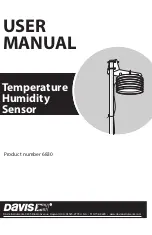
Chapter 7
Contoured Moves
7-2
ni.com
The difference between absolute contouring and relative contouring is how
the points in the buffer are treated. The previous example was of an absolute
contour move. A relative contour move treats the points as deltas according
to the following formula:
Point[
n
] = Point[
n
-1] + bufferPosition[
n
]
For a relative contour move that starts at position 100 and includes a buffer
with the following values: [10, 20, 30, 40], the points the contour move
follows are [100, 110, 130, 160, 200].
For contoured moves, no two consecutive points can differ by more than
2
15
– 1. For absolute position mode, the first position in the array passed to
the controller must be less than 2
15
– 1, and any two consecutive points
must be less than 2
15
– 1. For relative position mode, no point passed to the
controller can be greater than 2
15
– 1.
Arbitrary Contoured Moves
Contoured moves are useful when you want to generate a trajectory that
cannot be constructed from straight lines and arcs. To ensure that the
motion is smooth with minimum jerk, the motion controller creates
intermediate points using a cubic spline algorithm.
The move constraints commonly used to limit other types of moves, such
as maximum velocity, maximum acceleration, maximum deceleration,
and maximum jerk, have no effect on contoured moves. However, the
NI Motion Assistant prototyping tool can remap a user-defined trajectory
based on specified move constraints, preserving move characteristics and
move geometry.
















































